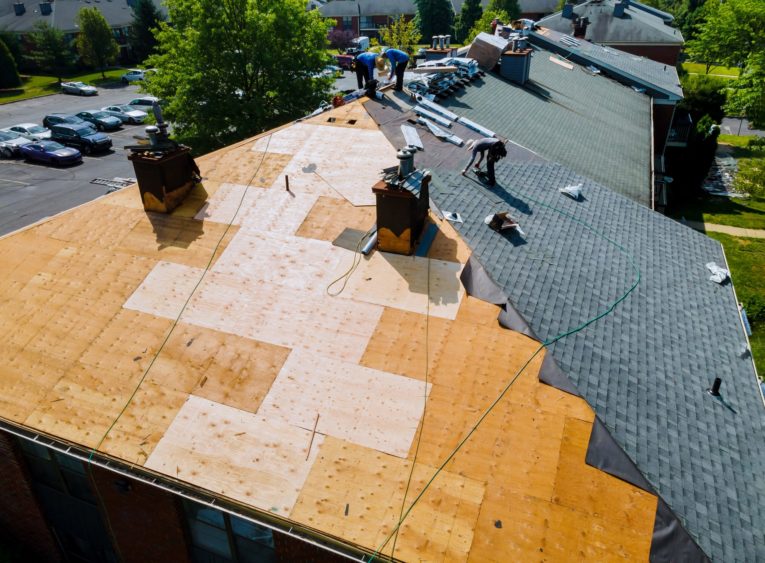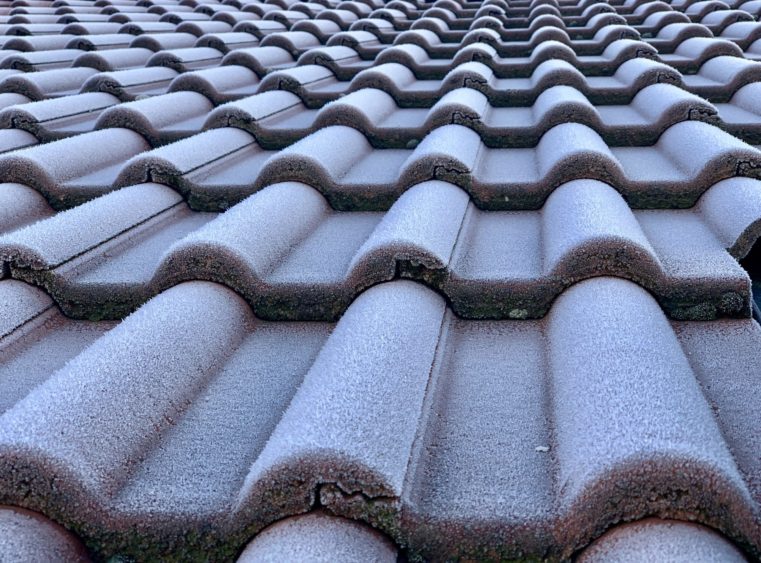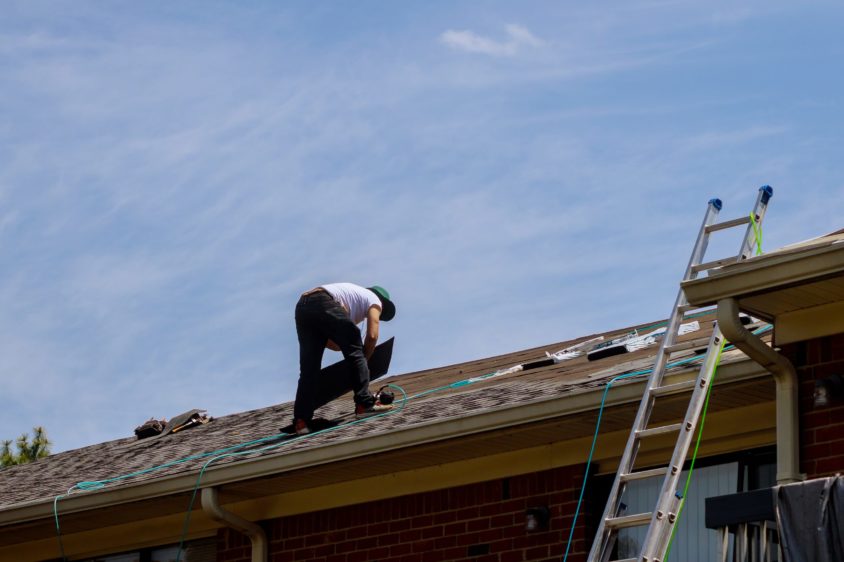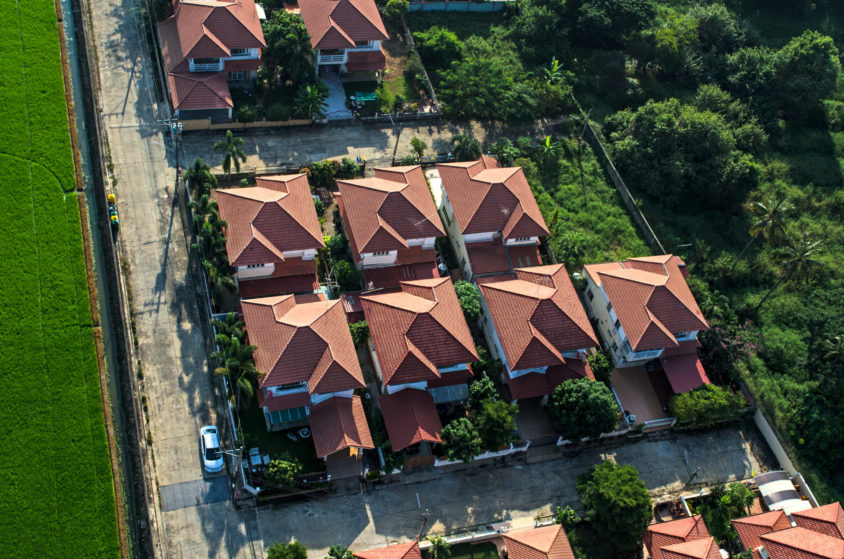Asphalt shingle roofs are a budget-friendly option that has the shortest lifespans compared to metal and tile roofs. Since they last over a decade, it’s just enough to make the investment worth it for people who cannot afford stronger materials.
Architectural asphalt shingles are a step up from 3-tab asphalt shingles, but the pros and cons are still the same. Before you decide whether you want an asphalt shingle roof, let’s go over the advantages and disadvantages of this popular choice.

Pros of an Asphalt Shingle Roof
Asphalt is the most economical choice in roofing materials. It’s also the most common roof type in America for a few reasons including their price and decent lifespan. Let’s look at those benefits in more detail.
Cost-Effective
Nobody enjoys spending thousands of dollars on their home or business out of the blue. When your old shingles curl or your flashing rips and water is pouring into your home, a fast fix at the right price sounds like the perfect plan.
With shingles costing anywhere from $3 to $5 every square foot, it’s a sweet deal many can’t resist. To put it into perspective, a metal roof will run you $5 to $10 per square foot.
Maybe you’re trying to sell your home, and that old roof is turning off prospective buyers. An asphalt shingle roof is the most affordable option. When you add “Brand New Roof” to your listing, it’s going to make homebuyers’ eyes light up.
Adequate Protection
Let’s face it! Sometimes you just need a roof over your head. You don’t want anything fancy, just something that does the job.
Asphalt shingles are a solid choice for people who want a roof that simply protects their home or business from the elements. When properly installed, they are a surefire way to keep moisture out for over a decade.
Hundreds of Options
Asphalt shingles are fully customizable to suit your property and neighborhood. Many manufacturers make asphalt shingles, each with a large array of colors and styles. You can also choose between organic and fiberglass waterproof coatings.
Easy Installation and Repair
Asphalt shingles are lightweight and a piece of cake to cut. That makes them faster and easier to install and repair, which means less labor cost for you. If saving time is a big factor that weighs heavily on your roofing decisions, you’ll be pleased to know that we can do a full asphalt roof replacement in 2 days or less.
Cons of an Asphalt Shingle Roof
We won’t lie to you, asphalt shingles are not our top choice in roofing materials. There are a lot of disadvantages to them, especially in Florida where hurricane winds will plague your area year after year.
Wind Damage
Asphalt shingles crack, lift, and blow off. When they are exposed to high temperatures during the Summer, it will eventually make the shingles brittle.
If your area experiences powerful storms with high winds, you need to choose your asphalt shingles wisely. We recommend you buy a higher-end shingle, specifically a Class A asphalt shingle with UL 2218 Class 3 and 4 impact resistance. That should hold off 130mph winds until the materials deteriorate through age, granule loss, and UV ray damage.
Overall, you’re better off with a metal roof because it can withstand winds up to 160mph. They also don’t blow off in tiny pieces that could injure people on the ground. Although a hurricane can damage every type of roof, a metal roof will bend or dent before it breaks and exposes your home to the elements. If you are interested in an upgrade, read the Pros and Cons of Metal Roofs.
Toxic Pollutants
They make asphalt from semi-solid petroleum that is not environmentally friendly at all. Shingles also contain asbestos and other nasty chemicals. When it rains, traces of these toxins can run off and pollute the soil. If you like to grow fruits, vegetables, and herbs around your home, the idea of toxins might not appeal to you.
Some contractors may offer to recycle your old shingles so that they can be made into street pavement in the future. Ask your roofers if they can recycle your shingles.
Heat Absorbing
Asphalt shingles will actually heat more than the surrounding air. On an 80 degree day, your shingles will be 30 to 40 degrees hotter. That’s completely opposite to metal and tile that actually reflect heat and stay cooler.
This isn’t splendid news for your attic space or your energy bill. The best defense against this increased heat is a balanced ventilation system that supports ample airflow in your attic space. An expert roofing contractor will explain your options to make your roofing system as energy-efficient as possible.
Asphalt Shingle Roofing Installation and Repair in Dade, Broward, and West Palm Beach, Florida
If roofing materials make your head spin and you need answers fast, get in touch with local roofers you can trust! Roofing Recovery has been servicing your neighborhood for over 30 years and we can help you decide what roof will suit your taste and budget.






